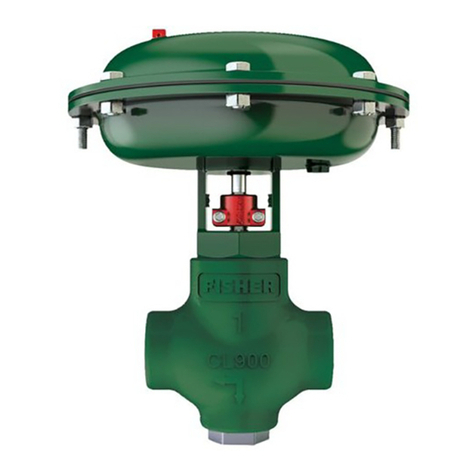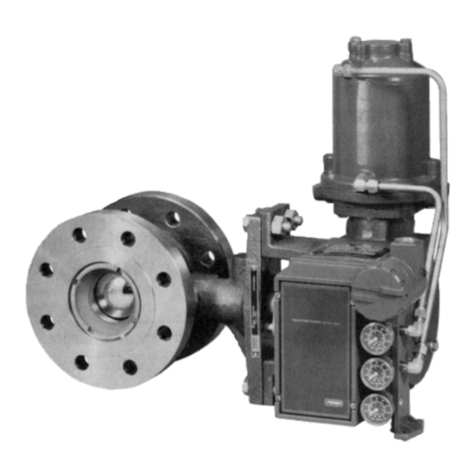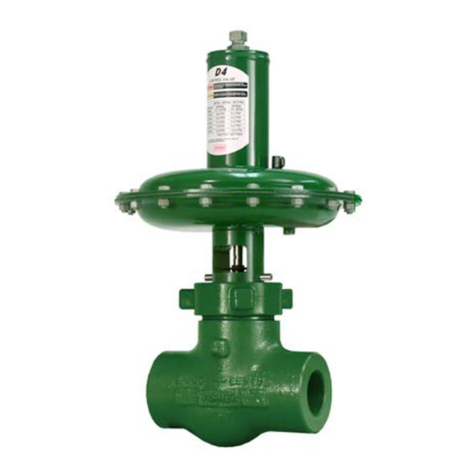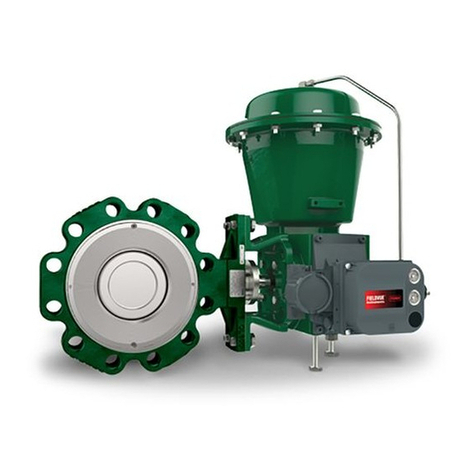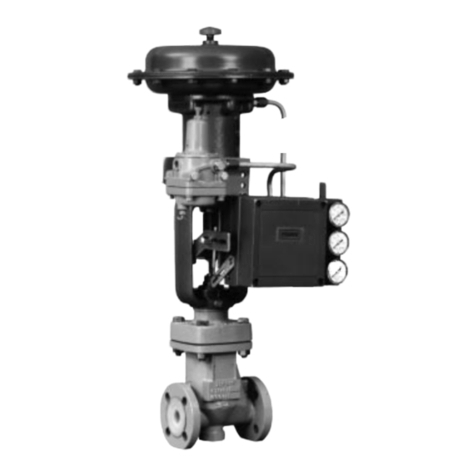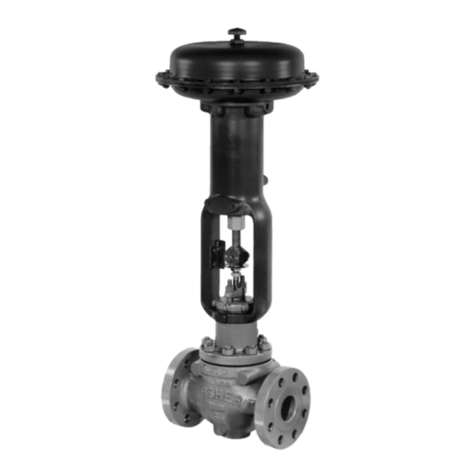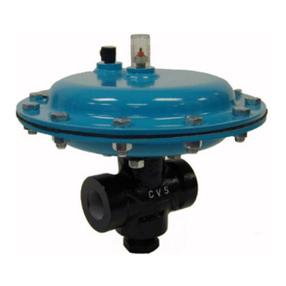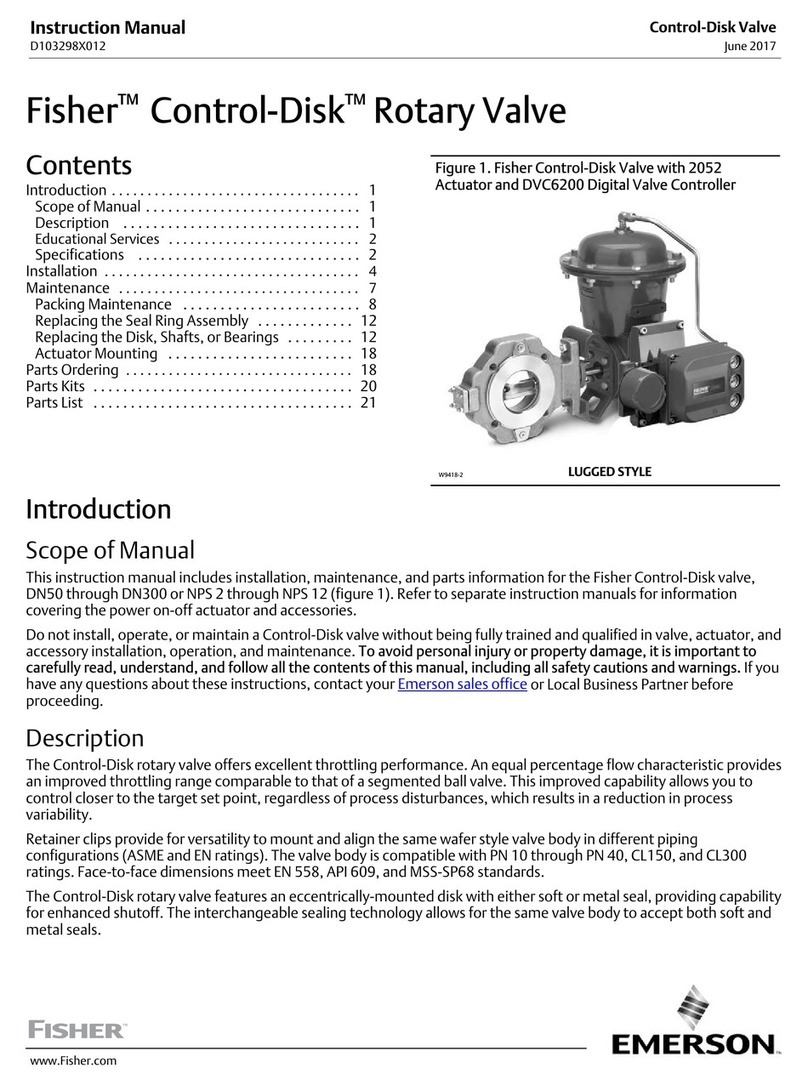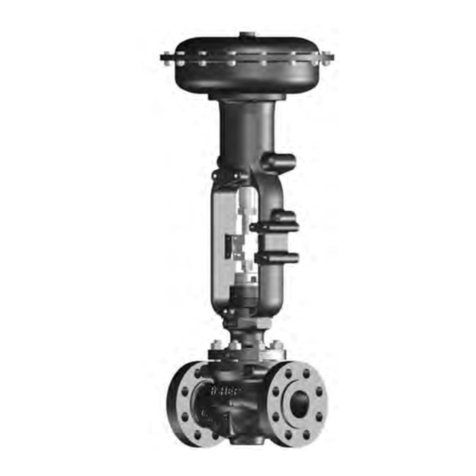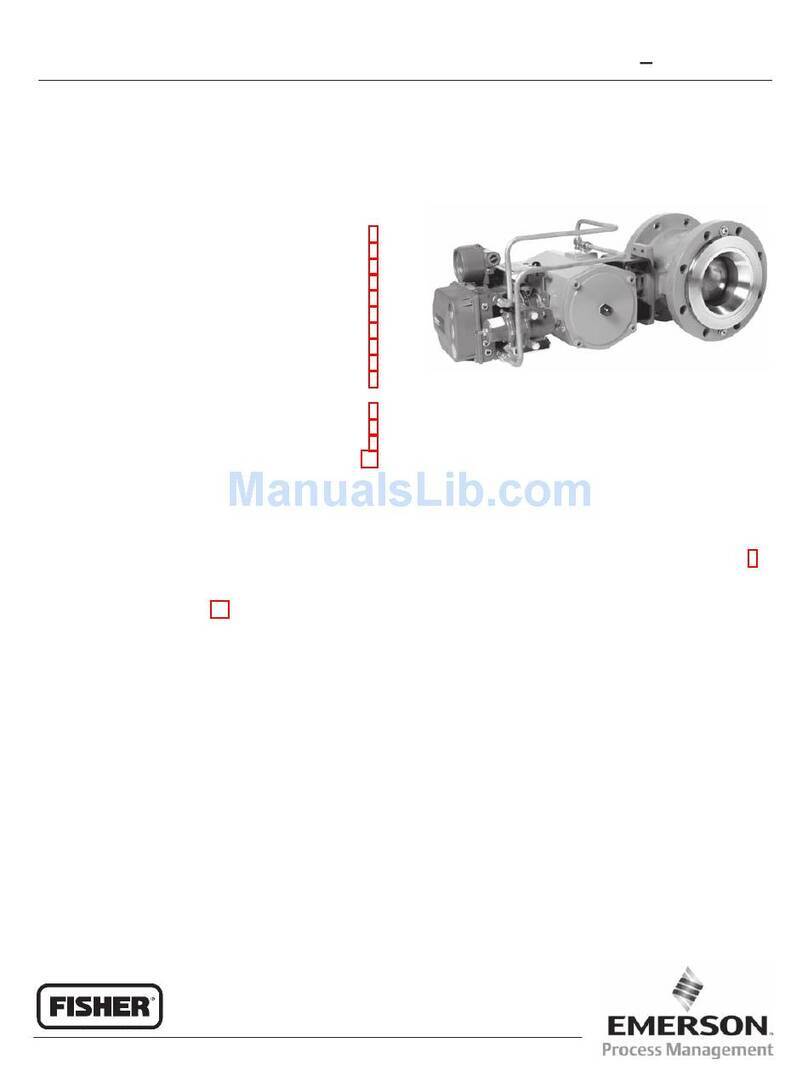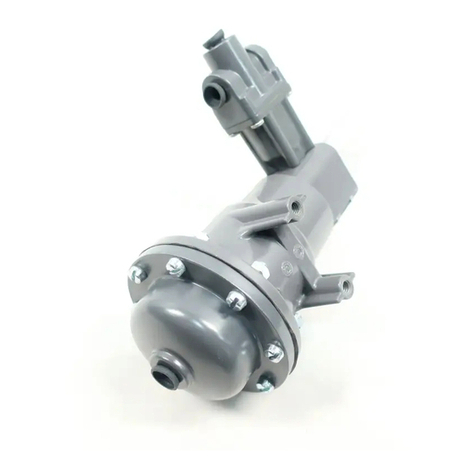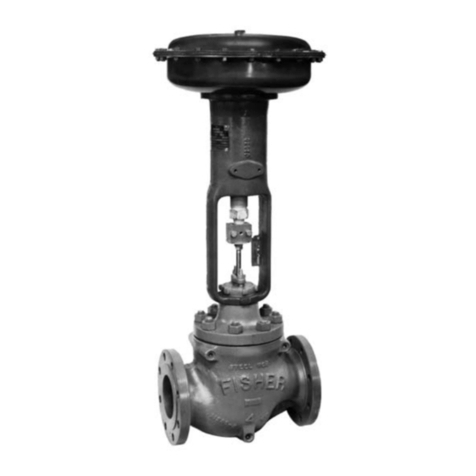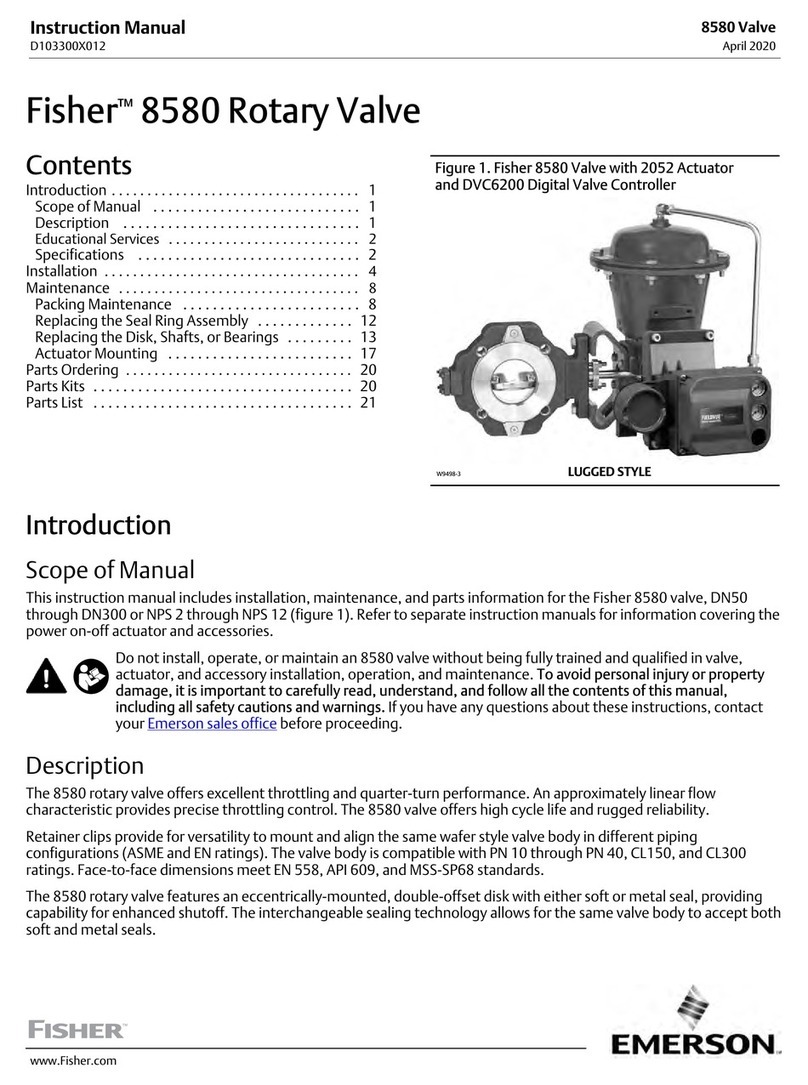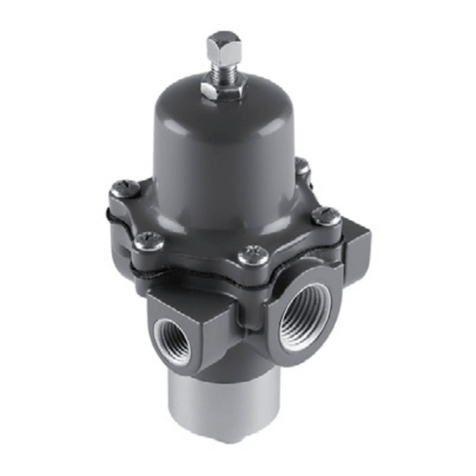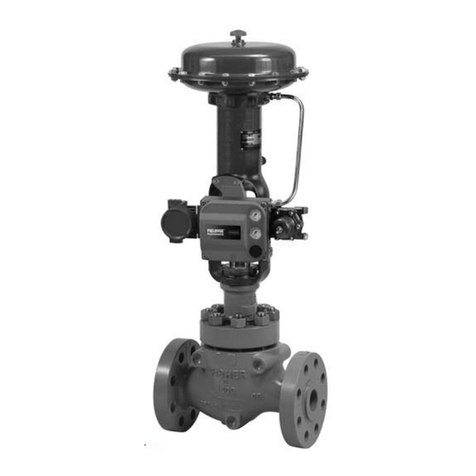
Instruction Manual
D103176X012
Introduction and Specifications
June 2017
5
Table 1‐1. Specifications
Available Configurations
JIntegral mounting to the Fisher GX Control Valve
and Actuator System JSliding-stem applications
JQuarter-turn rotary applications
The DVC2000 digital valve controller can also be
mounted on other actuators that comply with IEC
60534-6-1, IEC 60534-6-2, VDI/VDE 3845 and
NAMUR mounting standards.
Input Signal
Analog Input Signal: 4-20 mA DC, nominal; split
ranging available
Minimum Voltage: Voltage available at instrument
terminals must be 8.5 volts for analog control, 9.0
volts for HART communication
Maximum Voltage: 30 volts DC
Minimum Control Current: 4.0 mA (below 3.5 mA
may cause microprocessor restart)
Overcurrent Protection: Input circuitry limits current
to prevent internal damage
Reverse Polarity Protection: No damage occurs from
reversal of loop current
Output Signal
Pneumatic signal as required by the actuator, up to
full supply pressure
Minimum Span: 0.5 bar (7 psig)
Maximum Span: 7 bar (101 psig)
Action: Single Acting, direct
Supply Pressure(1)
Recommended: 0.5 bar (7 psig) greater than the
maximum actuator requirements
Maximum: 7 bar (101 psig)
Supply pressure medium must be clean, dry air or
noncorrosive gas
Per ISA Standard 7.0.01
A maximum 40 micrometer particle size in the air
system is acceptable. Further filtration down to 5
micrometer particle size is recommended. Lubricant
content is not to exceed 1 ppm weight (w/w) or
volume (v/v) basis. Condensation in the air supply
should be minimized
Per ISO 8573-1
Maximum particle density size: Class 7
Oil content: Class 3
Pressure Dew Point: Class 3 or at least 10_C less than
the lowest ambient temperature expected
Temperature Limits(1)
-40 to 85_C (-40 to 185_F). LCD may not be readable
below -20_C (-4 _F).
Air Consumption(2)
Supply pressure:
At 1.5 bar (22 psig)(3):0.06 normal m3/h (2.3 scfh)
At 4 bar (58 psig)(4):0.12 normal m3/h (4.4 scfh)
Air Capacity(2)
Supply pressure:
At 1.5 bar (22 psig)(3):4.48 normal m3/h (167 scfh)
At 4 bar (58 psig)(4):9.06 normal m3/h (338 scfh)
Independent Linearity
±0.5% of output span
Electromagnetic Compatibility
Meets EN 61326-1:2013
Immunity—Industrial locations per Table 2 of the
EN 61326-1 standard. Performance is shown
in table 1‐2 below
Emissions—Class A
ISM equipment rating: Group 1, Class A
Tested to NAMUR NE21 requirements.
Vibration Testing Method
Tested per ANSI/ISA 75.13.01 Section 5.3.5. A
resonant frequency search is performed on all three
axes. The instrument is subjected to the ISA specified
1/2 hour endurance test at each major resonance,
plus an additional two million cycles.
Input Impedance
The input impedance of the DVC2000 active
electronic circuit is not purely resistive. For
comparison to resistive load specifications, an
equivalent impedance of 450 ohms may be used. This
value corresponds to 9 V @ 20 mA.
Electrical Classification
Hazardous Area:
CSA—Intrinsically Safe and Non-incendive
FM—Intrinsically Safe and Non-incendive
ATEX—Intrinsically Safe
IECEx—Intrinsically Safe
-continued-

